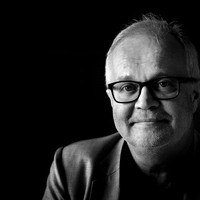Karen L Church - Profile on Academia.edu (original) (raw)

Late precontact america human lifeways researcher
Address: Montreal, Quebec
less
Related Authors
Uploads
Papers by Karen L Church
Waadluwaan Xaadaas Archaeology, Archaeology for All People Educational Field Trip for local high school student at Yan village site, Haida Gwaii
Working with a local Elder, we designed a field trip to an early contact period village site. Stu... more Working with a local Elder, we designed a field trip to an early contact period village site. Students were walked through the village site and introduced to a series of archaeological and cultural site types, and protocol for interacting with such sites was discussed. We then took them into the forest behind the village to look at a series of culturally modified trees, and discussed the material use represented by these sites.
A powerpoint presentation is available upon request.
k'yuuwaatl'aagee means 'coming out of the woods on a trail or road' in xaad kil, ... more k'yuuwaatl'aagee means 'coming out of the woods on a trail or road' in xaad kil, the Haida language. The Haida Gwaii Trails Strategy provides a method for development of trail tourism on Haida Gwaii, British Columbia, Canada, and includes the results of a public and stakeholder consultation process, as well as an implementation plan.
My Master of Arts thesis is a study of the little known inland lifeways of the late precontact on... more My Master of Arts thesis is a study of the little known inland lifeways of the late precontact on Graham island, xaadlaa gwaayee (Haida Gwaii). I first describe the current situation, and the rational for my research focus. I then detail the demography and associate the dramatic cultural losses of the more than decimation of the population, with the dearth of ethnography available regarding the inand lifeways. xaadaaagee (the Haida) are thought of as a coastal people, who only ventured inland in search of resources. My research shows that inland trails existed and that these trails connected people to each other across the islands, as well as the resources. I employ the archaeological record, GIS analyses, environmental data, historic maps, and the indigenous language of inland lifeways as additional layers of cultural information. Having been a resident of these remote islands for 22 years, I use my personal experience of this landscape to better understand how people moved through it, and why. Culturally modified trees that are outliers, located far from the coast in the unique rainforest of these islands are not only the evidence of material cultural practices, but also trail markers and nmemonic devices, that are the touchstones of this research.
Waadluwaan Xaadaas Archaeology, Archaeology for All People Educational Field Trip for local high school student at Yan village site, Haida Gwaii
Working with a local Elder, we designed a field trip to an early contact period village site. Stu... more Working with a local Elder, we designed a field trip to an early contact period village site. Students were walked through the village site and introduced to a series of archaeological and cultural site types, and protocol for interacting with such sites was discussed. We then took them into the forest behind the village to look at a series of culturally modified trees, and discussed the material use represented by these sites.
A powerpoint presentation is available upon request.
k'yuuwaatl'aagee means 'coming out of the woods on a trail or road' in xaad kil, ... more k'yuuwaatl'aagee means 'coming out of the woods on a trail or road' in xaad kil, the Haida language. The Haida Gwaii Trails Strategy provides a method for development of trail tourism on Haida Gwaii, British Columbia, Canada, and includes the results of a public and stakeholder consultation process, as well as an implementation plan.
My Master of Arts thesis is a study of the little known inland lifeways of the late precontact on... more My Master of Arts thesis is a study of the little known inland lifeways of the late precontact on Graham island, xaadlaa gwaayee (Haida Gwaii). I first describe the current situation, and the rational for my research focus. I then detail the demography and associate the dramatic cultural losses of the more than decimation of the population, with the dearth of ethnography available regarding the inand lifeways. xaadaaagee (the Haida) are thought of as a coastal people, who only ventured inland in search of resources. My research shows that inland trails existed and that these trails connected people to each other across the islands, as well as the resources. I employ the archaeological record, GIS analyses, environmental data, historic maps, and the indigenous language of inland lifeways as additional layers of cultural information. Having been a resident of these remote islands for 22 years, I use my personal experience of this landscape to better understand how people moved through it, and why. Culturally modified trees that are outliers, located far from the coast in the unique rainforest of these islands are not only the evidence of material cultural practices, but also trail markers and nmemonic devices, that are the touchstones of this research.












